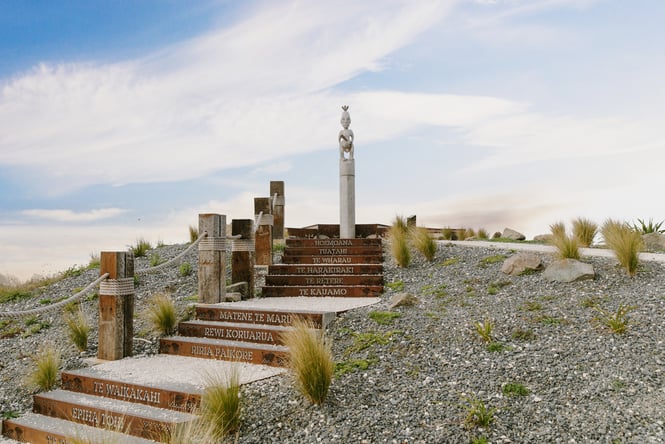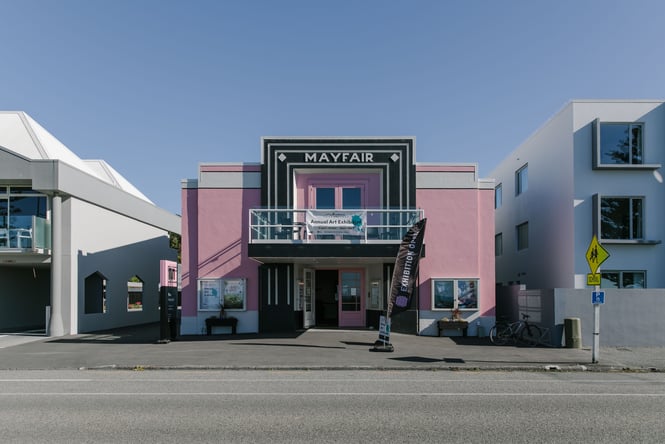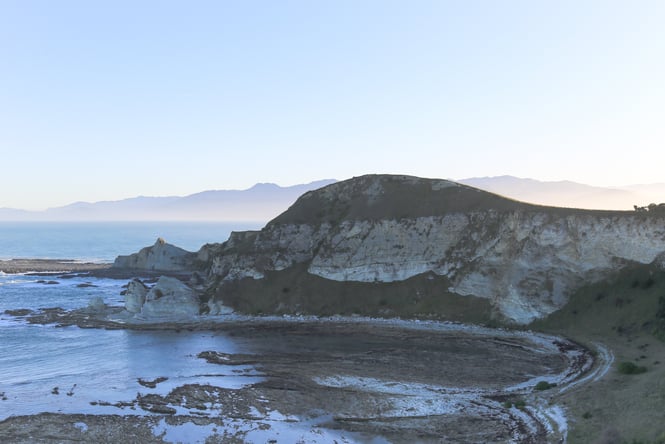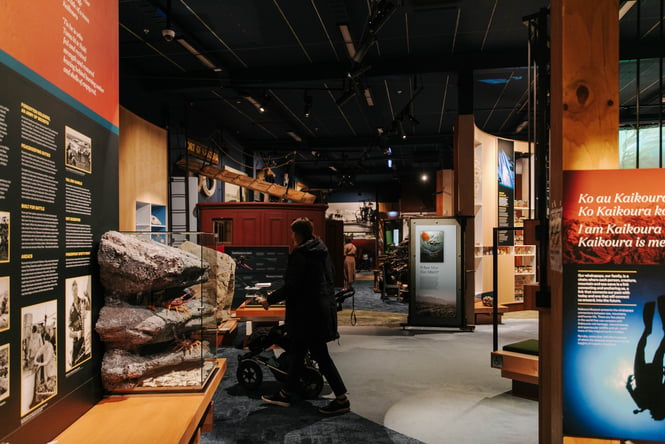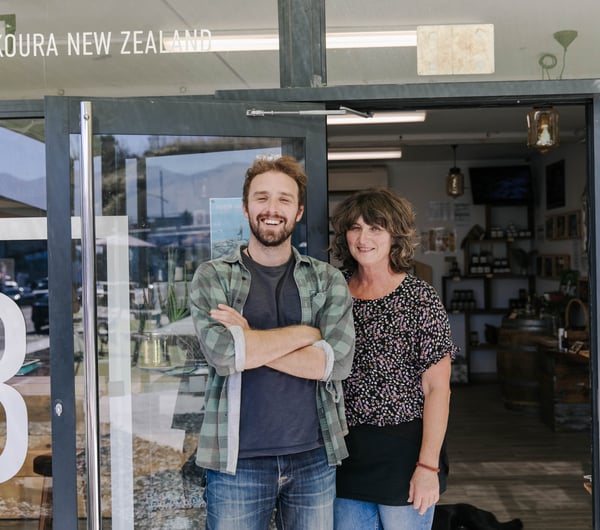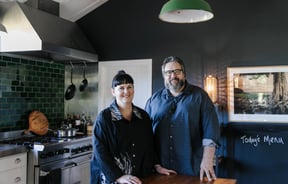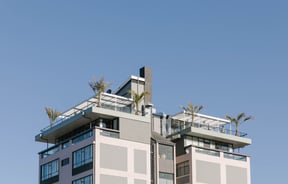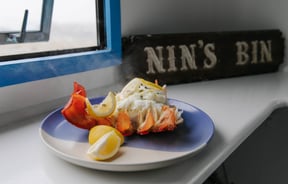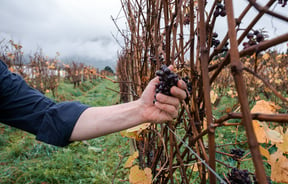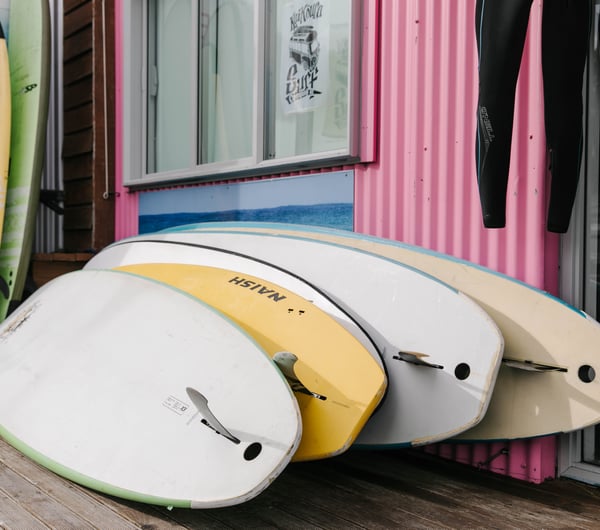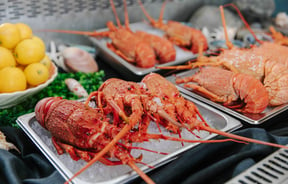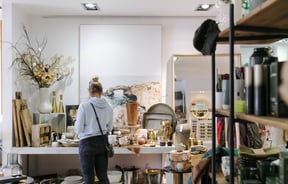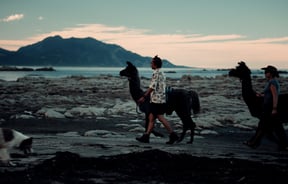A Self-Guided Storytelling Tour of Kaikōura
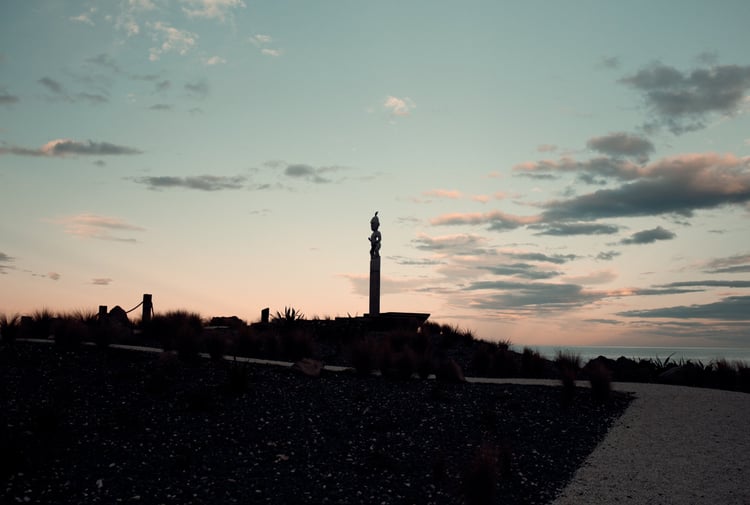
Where rugged mountains meet waves crashing along a spectacular, rocky coastline presided over by diverse colonies of marine life, is the picturesque town of Kaikōura.
Words by: Izzie Thompson
Photos by: Nancy Zhou
There aren’t many places in the world that can compare to the natural wonders surrounding this quiet town, both above and below the surface. Surf world-famous breaks, observe the rich wildlife, learn about the natural and built history of the fishing settlement, and dine on the freshest imaginable local delicacies.
A well-known base for marine adventures, there are endless stories to uncover and memories to create in this dramatic alpine-meets-aquatic environment.
An indication of the abundant sea life that occupies these waters is the name Kaikōura, which comes from the Māori words for meal/to eat ('kai) and crayfish (kōura), recalling the occasion in Māori mythology when explorer Tama ki te Raki stopped in the area and had a feast of crayfish. Many deep-water species are also found unusually close to shore here, due to the geology of the nearby oceanic Hikurangi Trough and submarine Kaikōura Canyon, which in turn attracts one of Kaikōura’s most famous inhabitants, the sperm whale.
We’ve narrowed down some of the not-to-be-missed cultural and historic sites so that you can take yourself on a self-guided tour of Kaikōura.
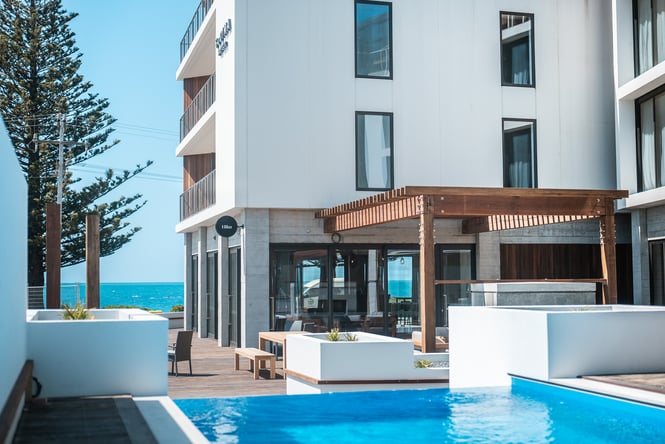
Sleep and kai at Sudima and Hiku
114 Esplanade, Kaikōura
A good night’s rest is a must for any storytelling expedition. There’s no better home base (or handy spot for some midday shut-eye between outings) than Sudima Kaikōura, a short walk from the town’s main activity centres and across the road from the beach. Every room looks out onto a marvellous mountain or sea scene - incredible natural beauty, so close you can almost touch it, is a captivating sight to wake to - it’ll make you want to get out there and start exploring.
Get your first taste of historic and cultural narratives before leaving the hotel grounds. Discover local Māori artwork in the atrium, reflective of the relationship with the local iwi, Te Rūnanga o Kaikōura, hapu of Ngāi Tahu. Hiku, the onsite restaurant, references nearby coastal geology through its thoughtful interior design. Distinctive geological patterns are reflected in the flooring, rusticated timber is a nod to the driftwood-covered shorelines while wooden board-form concrete echoes the textures of railway bridges. Marine colours and lighting subtly further the connection with the environment at hand.
From the materiality to the name – Hiku is the Māori word for whale tail, an iconic Kaikōura sight – the space complements the expansive, unobstructed views of the breathtaking landscape just outside the restaurant. These surroundings provide quality fare and inspiration to the menu too, on which you’ll find local produce and kaimoana, and a wine list that exclusively features Kaikōura and the neighbouring regions' artisan grape growers and winemakers. All served with a side of stunning sea views.
Uncover local tales with the Cultural Artwork Package
State Highway 1, Kaikōura
Hop in the car to experience more of the coastline and uncover local tales at your own leisure. Twenty minutes south of Kaikōura in Oaro the story of rebuilding and improving this scenic coastal corridor, one of the most stunning drives in the country that was rendered impassable by the 2016 Kaikōura earthquake, commences.
More than twenty sites (spaced over 60 km of highway) showcase an extensive range of culturally significant artworks, presenting key narratives of the region. Local artists worked closely with Te Rūnanga o Kaikōura and Alliance’s design and landscaping team to create a package of memories; every piece of art is there for a reason. A wooden palisade at Peketā, adorned with eight tekoteko (small carved pillars), acknowledges the adjacent historic Pā site. The creation story, as told by Ngāi Tahu leader Matiaha Tiramorehu in 1849, is communicated over seven murals on tunnels and retaining walls. From the story of Paikea the whale rider (whom the Ngāti Kuri people of Kaikōura are descendants of) to a genus of rock daisy, prized for its silk-like fibres and found only here, there’s a lot of rich, local history to take in. Take your time and make many stops, to enjoy and absorb the tales told along this exceptional seaside passage.
Be inspired and informed at The Mayfair Arts and Culture
80 Esplanade, Kaikōura
Standing pretty in pink on the waterfront is Kaikōura’s hub of arts and culture, housed in an iconic Art Deco building that first opened its doors in 1934: The Mayfair. An indispensable part of the community, facilitating participation and involvement in and access to the arts has always been at the top of The Mayfair’s agenda - but that hasn’t been as easy as throwing open the doors each day.
Everything on site was damaged beyond repair in the 2016 earthquake, except, incredibly, the distinctive pink frontage. While its doors were forced closed for four years, individual donations and pledges from local charitable trusts funded the construction of The Mayfair’s now state-of-the-art facilities, restoring the theatre’s presence as a place where people can come to engage with what’s showing or gather to connect on a more social level. What started life as a live theatre and movie venue now boasts an even wider offering with the addition of an event and exhibition space and two purpose-built auditoriums that can host lectures and conferences, as well as cinema, of course.
In a locale where day-to-day life hasn’t always been smooth sailing, The Mayfair lives on thanks to steadfast community support; in return, it continues to nurture health and wellbeing through the arts. Behind the enduring façade, entertainment, education, information and inspiration await.
Stroll the Kaikōura Peninsula Walkway
Kaikōura Peninsula Walkway, Kaikōura Peninsula, Kaikōura
Circumnavigate the rocky outcrops, sheltered embayments, limestone and boulder reefs and crescent-shaped stony beaches of the Kaikōura Peninsula to gain a personalised perspective of this rugged geology, by foot.
Starting from the Esplanade or Point Kean, make your way southeast to spy seals sunning themselves on the rocks at the latter’s famous colony. Due to the uplift caused by the earthquake, the seabed that once was submerged is now visible and Aotearoa’s newest coastline can be explored at low tide. Diving and snorkelling reveal an even closer look at the life of the aquatic if you’ve remembered to pack your wetsuit and mask.
The next stop is Whalers Bay. Hope Springs emerged in Whalers Bay post-quake as a result of new fissures in the sea floor - the phenomenon of bubbles rising to the surface from an undersea vent. The Peninsula Walkway loops around the headland to South Bay, where you can then cut back across to town. Signage along the track features information about the people who lived here, the land, sea, plants and animals - keep an eye out for shorebirds, seabirds, and dolphins playing in the water; a breaching whale might be spotted further out if you’re very lucky. With panoramic cliff top views of the open ocean out to the distant horizon juxtaposing the craggy, mountainous skyline on your other side, there’s much to observe and discover in this corner of Kaikōura.
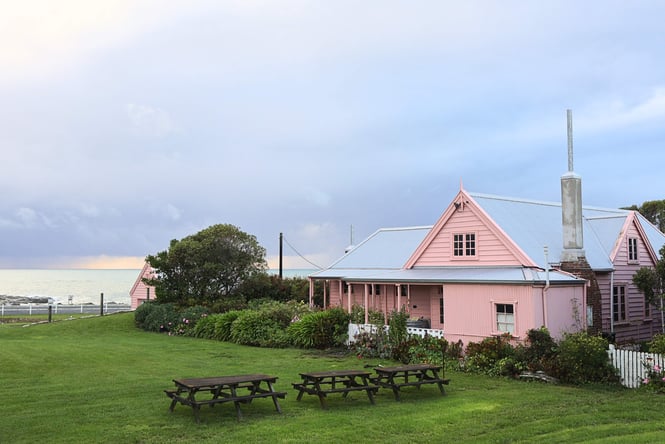
Explore Fyffe House
62 Avoca Street, Kaikōura
Halfway between the Sudima and the seals at Point Kean is another pink beacon of history. Fyffe House is Kaikōura’s oldest surviving building and all that is left of the 1842 pioneer Waiopuka whaling station.
Just as the town was built on the back of the bounty of kaimoana, so too was Fyffe House on its occupants’ livelihood, the whaling industry: this wooden cottage, an imported kitset from Australia as timber was so scarce on the peninsula, was resourcefully laid on foundations made from tohorā/southern right whale vertebrae.
Complete with original furniture and artefacts, an amble around the historic house and grounds uncovers stories of struggle and resilience of the three families who once lived here. Carvings and other displays allude to earlier activities at the site – the first inhabitants of this coast, Māori have resided here for more than 800 years. Explore this peaceful seaside setting at your own pace, from evocative visual and aural exhibits inside to the characteristic coastal and inland views on permanent display outside.
Discover the Region's History at Kaikōura Museum
96 West End, Kaikōura
Whether or not you’re familiar with traditional woven craypots, it’s hard to miss the landmark building in the centre of town that is home to four organisations, among them the Kaikōura Museum. As uniquely Kaikōura as the timber craypot sculpture that covers half of the façade, the museum exhibits many quirky, local treasures such as a replica of the largest intact Moa egg ever found (which was in Kaikōura), a fully restored cabin from the Taiaroa ship that sank off the coast in 1886, footage of the local UFO story 1978 Kaikōura Lights, plus extensive fossil, marine specimen and taonga Māori collections. Kaikōura has a colourful social, cultural and natural history, a place where land and sea are interconnected in more ways than just visually. Step into the literal and figurative heart of this maritime town, where chronicles of its journey are brought to life.
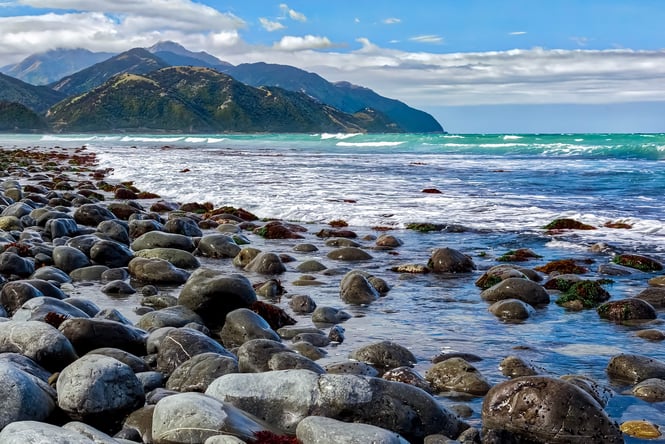
Surf the Breaks at Mangamaunu
Kaikōura’s coastal heritage may begin with marine life, but that’s certainly not where it ends. The unique geography causes a phenomenon that has been the pull for another group of people, from near and far, for decades. Their common interest is surfing, and the waves here are world class.
Mangamaunu is a boulder-laden right-hand point break with powerful waves that can peel for 300m, and if that means nothing to you then note that just north of Kaikōura is an Outstanding Natural Feature that’s one of just seventeen protected surf spots in Aotearoa. Surfers discovered this and other nearby breaks back in the 1960s, when board-sharing and riding waves in woollen jerseys were not uncommon sights. While clothing and equipment have come a long way since then, surf culture has also evolved but for many, recognising and respecting the beauty and power of the sea is still the main drawcard. Sitting on a board out the back, looking across deep green water to snow-capped mountains, is an experience in and of itself. From the safety of solid ground (perhaps your preferred location) to the enchanting yet unpredictable ocean, this is a truly special place that you’ll be reluctant to leave.
Neat Kaikōura Places
Hiku
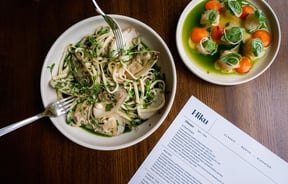
Hiku sits directly at the water's edge in the heart of Kaikōura. The restaurant, along with the Sudima Hotel it shares the space with, opened its doors in September 2022.
